overall vitality

free shipping over $100 (USA & Canada)
1-877-937-4372 the pet expert hotline
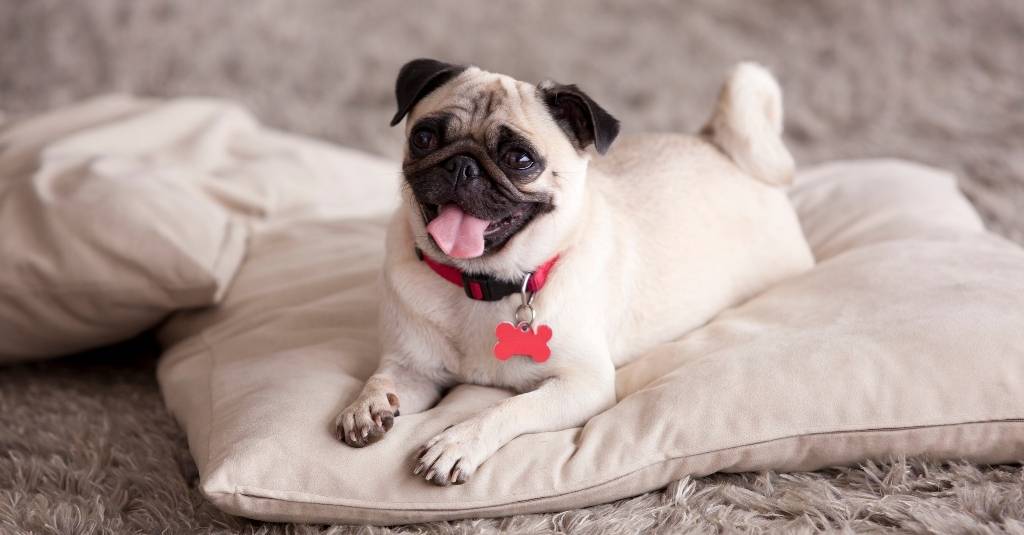
Bringing a new dog into your life can feel a lot like bringing home a baby. You have to learn about how to interact with and care for a little one that needs you to guide them. You know what they say, “it takes a village”. That’s why we’re here to help you as much as we can. For starters, here are some tips for first-time pet parents on how to take care of a dog.
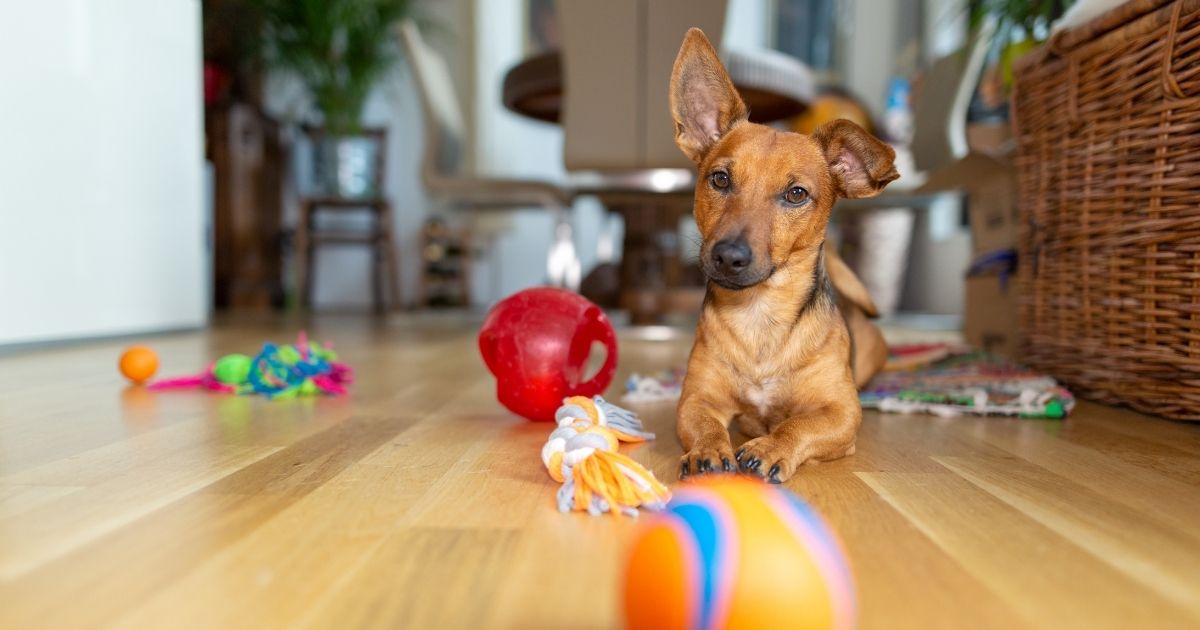
Crate/carrier. When picking your new dog up from the rescue, shelter, breeder, or whomever you are adopting the dog from, it is important to be able to safely transport them home. Placing your dog inside their carrier prevents them from wandering about in the car while you are driving. This is not only for your safety to not have a distraction while driving, but also to keep your dog as the car moves around. The carrier should be placed in a secure part of the vehicle like attached to a backseat, tucked on the floor between the front and backseats so that it does not get thrown around in the event of a car accident or sudden stop.
Puppy pads. As puppies and even adult dogs are adjusting to life in a new place, accidents happen. Whoever has been caring for the dog before you brought them home likely has some sort of system for their potty business. Some people will use newspapers as a thrifty alternative and other dogs may have already been trained to do their business outside. Puppy pads are good to keep in your puppy’s space while they are still learning so that messes can be easily dealt with. Keep in mind that some dogs may chew or rip up the puppy pads and they should not be a replacement for teaching your dog to do their business outside.
Leash and collar/harness. On the topic of doing their business outside, a leash and collar/harness are an essential part of that. Going for walks is how your dog will learn how to socialize with other dogs and other humans, as well as get some exercise. We recommend using a standard flat leash, especially when training your new dog. Retractable or stretchable leashes make it harder to teach your dog etiquette for walks and can make it harder to maneuver them in emergency situations. It is a good idea to have a collar or leash with an identification tag for your pet. Collars can be worn all the time or just while out and about. Harnesses are generally more restrictive and are often better to be worn only when needed. Harnesses are very helpful for dogs who have a tendency to pull a lot while walking on a leash or can easily slip their head out of their collar.
Waste bags. Whenever you are taking your furkiddo for a walk, a car ride, a visit with friends and family, or an adventure, it’s a good idea to be prepared with waste bags. In many places, you can get a fine or a ticket for not cleaning up after your dog. We recommend finding ones that are compostable and comply with your local waste disposal guidelines.
Food and water dishes. It is important to have separate dishes for both food and water. We recommend avoiding plastic dishes as bacteria can get trapped in small abrasions on the surface of the plastic. Ceramic, pyrex, or stainless steel dishes are generally recommended, just make sure that whatever you choose is either high-quality or considered human-grade food safe. While glass dishes can be good for cats, we don’t generally recommend them for dogs as they tend to be less gentle with their dishes and have a higher chance of breaking or chipping. Make sure that you wash both their water and food dishes regularly and refill their water every day.
Food and treats. Depending on where you have gotten your new puppy from, they will likely be able to tell you what kind of food they have been giving to them. It can help to start your puppy with the same food that they are used to, as diet changes can cause gastrointestinal upset. Once you have brought your dog home, you can gradually transition them to a new food. If you are unsure of what you should be feeding your dog, we always recommend choosing a food that is high-quality and well-balanced. You can always consult your veterinarian on which food they would recommend for your dog or you can talk to us about a custom nutrition plan from our in-house vet Dr. Amanda.
Treats should make up no more than 30% of your pet’s diet. Excessive treats can cause issues like obesity and diabetes. We recommend always checking the ingredients when choosing treats and looking for ones that contain whole ingredients and things you can pronounce. You can even make some yourself at home with simple recipes.
Toys. Dogs, especially puppies, need exercise and mental stimulation. Toys are a great way to keep your dog entertained, burn off some energy, and bond. Make sure to always choose toys that are made specifically for pets and are suitable for the size of your dog. Toys like balls, stuffies, or ropes are often a hit with pooches. As your dog ages, you can find food puzzle toys that are a great way of helping your furry friend use some brain power and can help keep them occupied. Many toys like ropes and food puzzles should only be used while being supervised in case of choking.
A place to sleep. As mentioned before, crates can be used as your dog’s bed but it is often nice to have some other comfy places for your dog to relax. Placing a blanket or small bed inside their crate can make it more comfortable. Having another bed in other areas of the house where you are likely to spend your time like the living room can also give your pet a place to hang out while being nearby. Some shelters, rescues, and breeders will give each dog their own blanket that can be taken home with you as something familiar to comfort your dog.

When you first bring your dog home, the first couple of nights can be hard for both you and your puppy. They will likely cry, bark, or need to do their business during the night. It can be helpful to have your dog set up in a confined space where they can’t be getting into trouble while you are asleep. Setting up a pen in your laundry room or bathroom often works well as it can make messes easier to clean up and hazards can be safely put away.
Some people have differing opinions on whether or not dogs should be crate trained. We often recommend crate training for puppies as it gives them a safe place to feel at home, no matter where the crate is. By keeping their crate accessible and comfortable for them, puppies can learn that their crate is like their own personal bedroom and can be a place for a time out, feeling safe while traveling or on the go, or a cozy nap spot all in one.
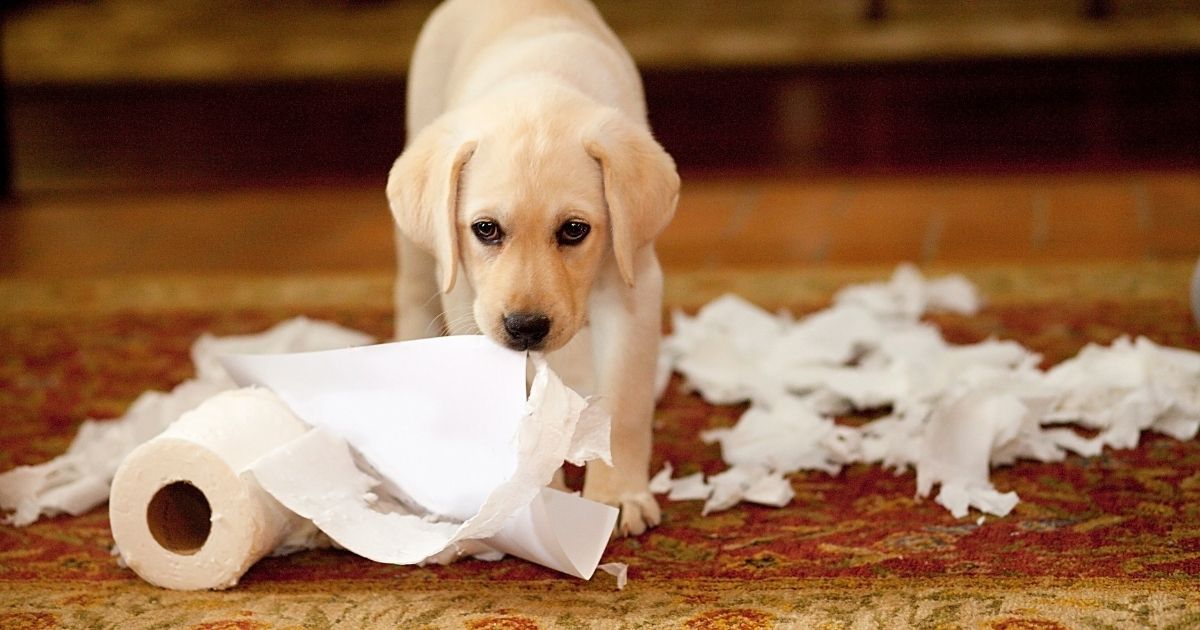
Before bringing your new furkiddo home, it is a good idea to make sure that your house is dog-proofed and ready for your little scamp.
Bathroom and kitchen. All of your trash cans should either have a secure lid or are inside of a cabinet to avoid any dumpster diving excursions. Childproof latches can be quite handy on things like your cabinets and toilet. Toilets can be especially dangerous to young puppies as there is a risk of them drinking harmful substances or drowning. Make sure all harmful substances (cleaning supplies, cosmetics, medications, alcohol, etc.) are put away in a cabinet that can be tightly closed or locked. Less harmful things that your dog can get into should also be safely stowed away like treats and food to prevent messes and overeating
Clean up. Give your house a thorough clean to make sure there are no small bits, crumbs, or garbage that your pet can get at. Underneath or behind furniture and appliances are prime areas where home debris can collect. While your new dog is still getting used to their new home, it may be a good idea to limit what parts of the house they have access to in order to limit hazards. Make sure that all small spaces your dog may get into are either safe or blocked off.
Small objects and toys. Make sure that all children’s toys and small objects are all put away to prevent choking hazards or small bits from getting stuck in their digestive system. Take the time to put away all items that you do not want your dog to use as a chew toy. Things like rugs, shoes, cushions, or clothes found on the floor are all things that your dog might see as a fun thing to play with or do their business on.
Plants. Some house plants can be toxic or harmful to pets. Like aloe vera, lilies, and some types of ivy. If you are bringing a new pet into your home, make sure that your plants are not dangerous to your pet or are out of reach. If your plants are safe but within reach, make sure that they are secured in place to prevent them from being knocked over and the plant pot from breaking.
Check your backyard, patio, and garage for hazards. Your garage might be an excellent place to store things that you don’t want your puppy to have access to. Make sure that your dog does not have access to the garage or outside without you escorting them. If you plan to train your dog to go out into the yard on their own to do their business, make sure that all your plants are not hazardous, trash and compost are out of reach, and your fence is secure.
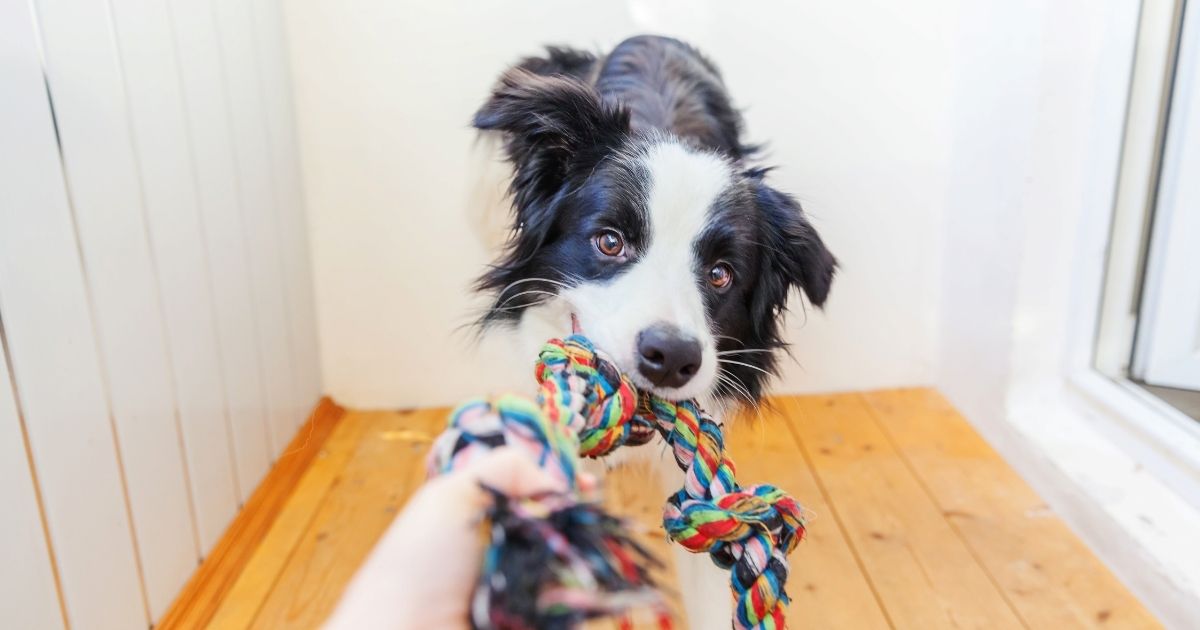
Your dog needs to learn how to entertain themselves while you are busy doing other things.
Puppies generally have a lot of energy but will still spend a good chunk of their days napping. Spending time together is really important for bonding with your new pet. Every day, you should take some time to play with them a bit, go for walks, and try to get some quality snuggle/nap time together. You likely won’t be able to entertain your new dog all day due to work, errands, etc. but that’s okay. Your dog needs to learn how to entertain themselves while you are busy doing other things. Just make sure that your dog is always in a safe, dog-designated space while you are not watching them or are doing other things. The more time you spend together, the more you will both understand each other and build a routine.
Puppy training classes are another good activity to do together. It helps reinforce your bond, teaches your pup good behavior and tricks, can be an opportunity to socialize with other dogs, and gives you a chance to learn some new things too.
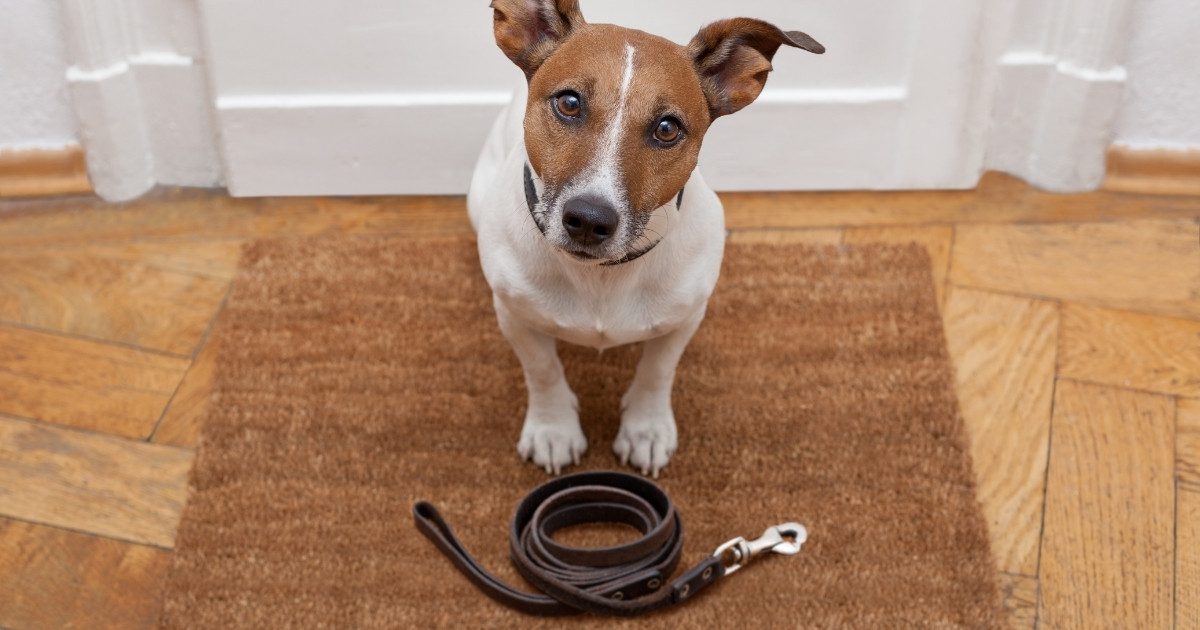
As you get to know each other better, you will start to pick up on each other’s cues. Dogs tend to like having your attention and may act out or get into trouble to get your attention. By keeping a schedule will help your dog learn cues for the things they want. Try to feed your dog and go for walks at the same time every day. Eventually, your dog will learn the routine or associate things like the door and going out to do their business. When you find your dog sitting in front of the door barking or barking at you in the kitchen, it is likely that they are trying to tell you that they want something they associate with that place.
As soon as you get them it’s a good idea to take them to the vet for a quick check-up. Wherever you are getting them from should be able to offer you some background on their medical history. If you have adopted a stray without any medical history, it is always a good idea to take them to the vet when welcoming them into your home to find out if they have any conditions you should be aware of and to find out whether they have been spayed/neutered.
A healthy dog should visit the vet at least once a year for a check-up and to ensure that all of their vaccines and shots are up-to-date. If your dog has a health condition that requires treatment from the vet or regular monitoring, your vet may advise more frequent visits.
A good indication, if your dog needs to go to the vet, is if you notice anything unusual changes in their appearance or behavior. Some things to look out for are:
Of course, if there is some sort of injury or emergency (like your dog eating something they shouldn’t), it is important to see a vet right away.
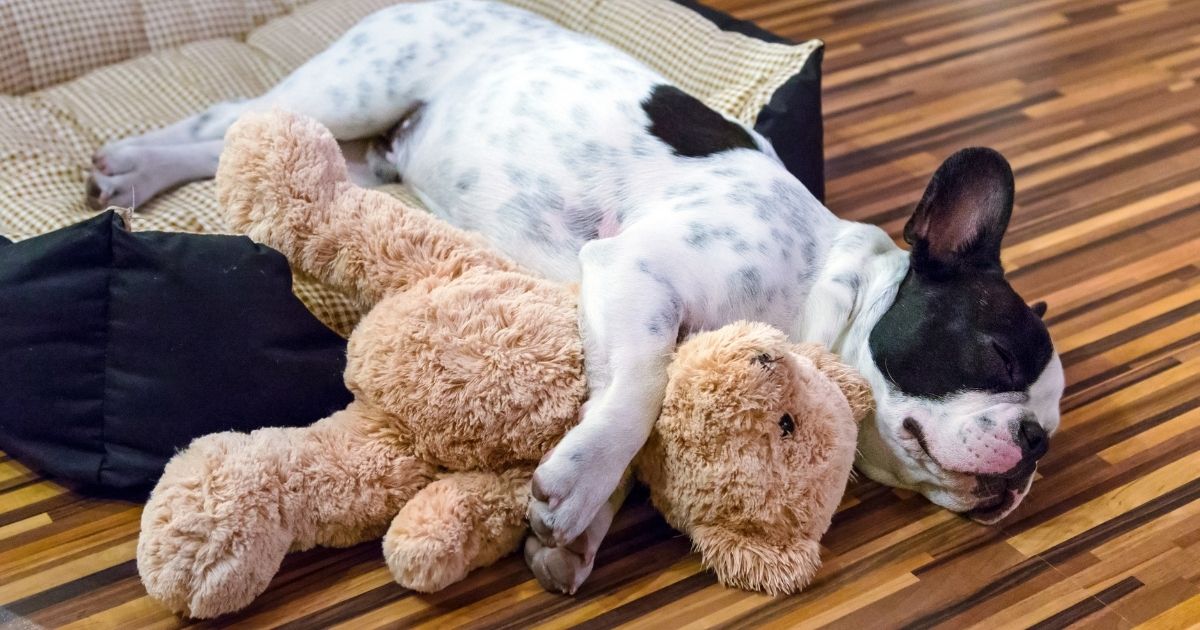
While bringing a dog into your home for the first time is very exciting, it can be stressful and a bit chaotic at times. That’s why it is so important to try to fill every moment you share together with a lot of love and patience. Though dogs can be a bit of a handful, all the happy moments you will share together are well worth it! We wish you lots of love, luck, and healthiness for this new chapter of your lives together! If you ever have any questions, click on the button below to start chatting with one of our pet experts!
overall vitality

For Overall Health and Well-Being
buy 2 and save $3
Support your dog’s health with omega 3 fish oil for dogs. Help them maintain a healthy coat, eyes, joints, immune system and overall organ function.


Support your dog’s health with omega 3 fish oil for dogs. Help them maintain a healthy coat, eyes, joints, immune system and overall organ function.

Our omega 3 fish oil for dogs is a great source of EPA (Eicosapentaenoic Acid 600mg) and DHA (Docosahexaenoic acid 460mg) essential fatty acids. This fish oil supplement for dogs is derived from sardines, anchovies and North Atlantic cod liver oil. It is molecularly distilled and cold pressed to improve the bioavailability of the omega 3 fatty acids, and is medical and human grade quality.
Omega 3 fish oil for dogs may be beneficial for the following:
Processed pet foods have increased omega-6 fatty acids, and decreased omega-3 fatty acids. The University of Maryland Medical Center states, "It is very important to maintain a balance between omega-3 and omega-6 fatty acids in the diet. A proper balance helps maintain and even improve health." Your dog’s body cannot easily make essential fatty acids. It is vital to provide omega 3 fish oil for dogs as an added supplement to your pet’s daily diet.
The American Journal of Veterinary Medicine has published studies on the benefits of omega 3 fatty acids (fish oils) for arthritis and degenerative joint disease in dogs. The studies showed that dogs who were given omega 3 fatty acids had a significantly improved ability to get up from a resting position and marked improvement in walking ability.
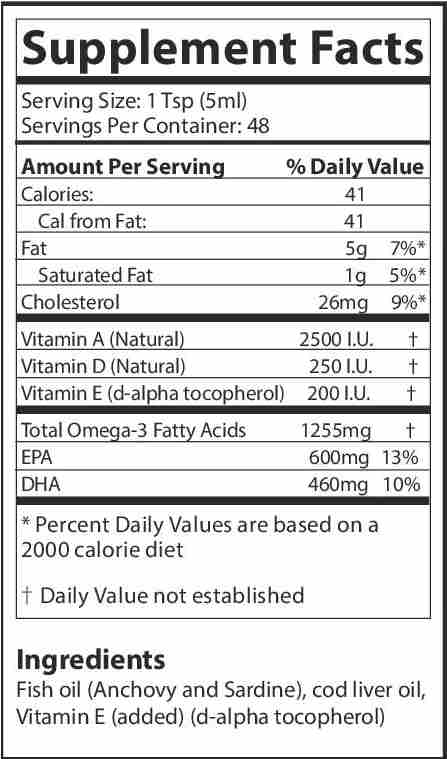
Suggested Dosage: To be taken once per day. Add to food based on weight chart.
Therapeutic Dosage: Double the quantity for maximum period of 4 weeks or follow veterinarian advise.
Pet’s Weight Dosage
0-15 lb = ¼ tsp
15-30 lb = ½ tsp
30-60 lb = 1 tsp
60-90 lb = 1 ½ tsp
How to Administer: Shake well before use. The easiest method is to add the dosage to your pets food. Some pets can be finicky, if this occurs consider hiding the appropriate amount in food most pet’s love such as fish, chicken, yogurt, or a favorite treat. If your pet only eats dry food then soak kibbles at feeding time.
For Best Results
Dietary supplements are beneficial to the health and well-being of your pet and are safe for long-term use. Every pet responds to natural supplements differently, therefore it is important to be consistent and administer the product daily. Supplements generally take two to four weeks to take effect, however this will vary from one animal to the next.
Product Storage
All NHV Natural Pet Products contain no artificial additives, preservatives or coloring. Shelf life after opening is 6 months and must be refrigerated after opening.
Cautions and Contraindications
Avoid During Pregnancy.
Our omega 3 fish oil for dogs is a great source of EPA (Eicosapentaenoic Acid 600mg) and DHA (Docosahexaenoic acid 460mg) essential fatty acids. This fish oil supplement for dogs is derived from sardines, anchovies and North Atlantic cod liver oil. It is molecularly distilled and cold pressed to improve the bioavailability of the omega 3 fatty acids, and is medical and human grade quality.
Omega 3 fish oil for dogs may be beneficial for the following:
Processed pet foods have increased omega-6 fatty acids, and decreased omega-3 fatty acids. The University of Maryland Medical Center states, "It is very important to maintain a balance between omega-3 and omega-6 fatty acids in the diet. A proper balance helps maintain and even improve health." Your dog’s body cannot easily make essential fatty acids. It is vital to provide omega 3 fish oil for dogs as an added supplement to your pet’s daily diet.
The American Journal of Veterinary Medicine has published studies on the benefits of omega 3 fatty acids (fish oils) for arthritis and degenerative joint disease in dogs. The studies showed that dogs who were given omega 3 fatty acids had a significantly improved ability to get up from a resting position and marked improvement in walking ability.

Suggested Dosage: To be taken once per day. Add to food based on weight chart.
Therapeutic Dosage: Double the quantity for maximum period of 4 weeks or follow veterinarian advise.
Pet’s Weight Dosage
0-15 lb = ¼ tsp
15-30 lb = ½ tsp
30-60 lb = 1 tsp
60-90 lb = 1 ½ tsp
How to Administer: Shake well before use. The easiest method is to add the dosage to your pets food. Some pets can be finicky, if this occurs consider hiding the appropriate amount in food most pet’s love such as fish, chicken, yogurt, or a favorite treat. If your pet only eats dry food then soak kibbles at feeding time.
For Best Results
Dietary supplements are beneficial to the health and well-being of your pet and are safe for long-term use. Every pet responds to natural supplements differently, therefore it is important to be consistent and administer the product daily. Supplements generally take two to four weeks to take effect, however this will vary from one animal to the next.
Product Storage
All NHV Natural Pet Products contain no artificial additives, preservatives or coloring. Shelf life after opening is 6 months and must be refrigerated after opening.
Cautions and Contraindications
Avoid During Pregnancy.
multivitamin support
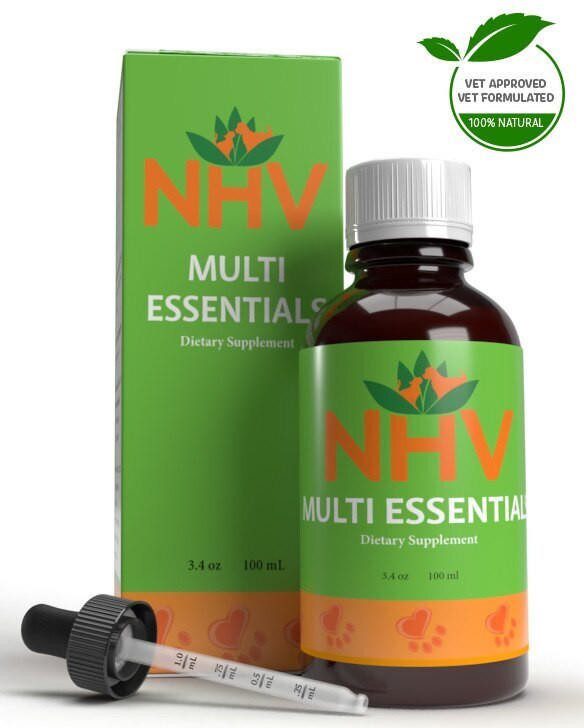
Herbal Digestive Aid, Energy Booster, and Multivitamin for Dogs
buy 2 and save $3
3 month supply for a small to medium size pet
NHV’s multivitamins for dogs targets the brain, stomach, major arteries, kidneys, and liver with a powerful blend of herbal support.


NHV’s multivitamins for dogs targets the brain, stomach, major arteries, kidneys, and liver with a powerful blend of herbal support.

Millions of people take multivitamins daily to support their health, and it only makes sense our canine companions can benefit just as much. This 100% natural plant-based liquid blend can help your dog with nutritional deficiencies.
Signs of Possible Vitamin Deficiency in Dogs
NHV’s Multi-Essentials are packed with herbs that are rich in vitamins and minerals. This vet-formulated blend is designed to benefit your dog’s health using all-natural organically grown herbs with no additives or preservatives.
Even if your pet is healthy, supplying a multivitamin is essential to maintain good health, and some pets need more vitamins and minerals than others. For more, read NHV’s blog, vet talk with Dr. Hillary Cook.
Benefits of NHV’s Multivitamins for Dogs
You can read NHV's blog about the importance of dog vitamin supplements. All pets can benefit from NHV’s Natural Pet Product, even small exotic pets.
If you have questions about plant-based supplements including our multivitamins for dogs, you can schedule a consultation with one of our highly trained holistic veterinarians, because, at NHV, total health and wellness for all pets is our top priority.
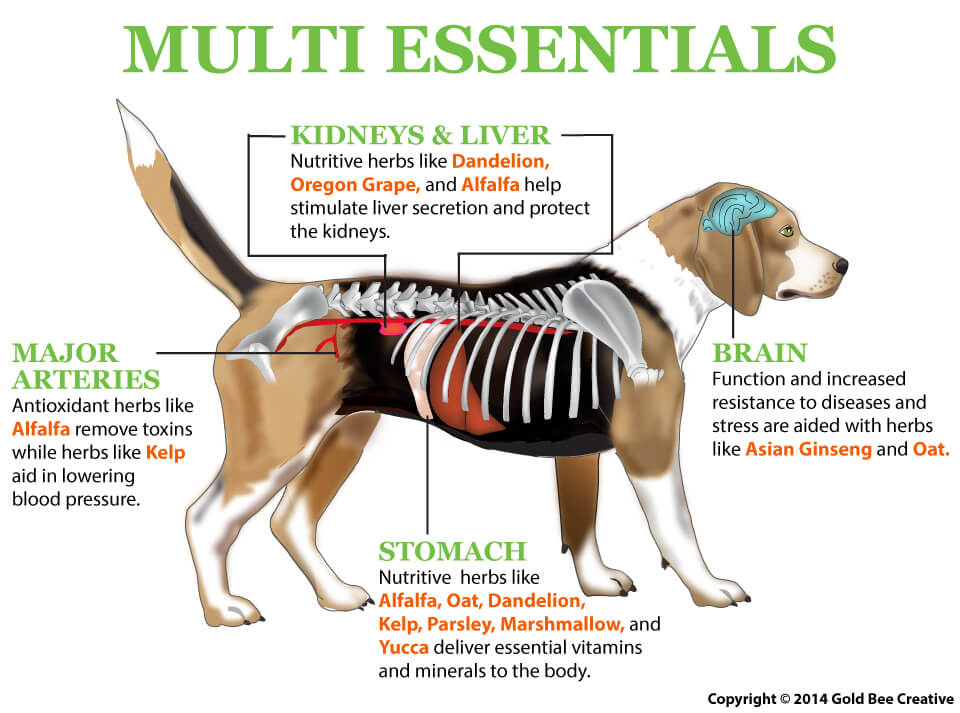
Select your pet's weight to determine the correct dose.
To be taken twice daily. Determine your pet’s weight and then use the easy chart below to determine the correct dose. This is the minimum dosage.
Pet's Weight Dosage
0 - 15 lb = 0.5 ml
16 - 30 lb = 1.0 ml
31 - 45 lb = 1.5 ml
46 - 60 lb = 2.0 ml
61 - 75 lb = 2.5 ml
Over 75 lb = 3.0 ml
How to Administer
Shake well before use. The easiest method is to use the dropper provide and places the drops into your pet’s food or favorite treat. You can also use the dropper and squirt directly into the pet’s mouth.
Some pets can be finicky, if this occurs consider hiding the drops in foods most pet’s love such as fish, chicken or yogurt or a favourite treat. If your pet only eats dry food then soak a few kibbles at feeding time.
For Best Results
Herbal dietary supplements are beneficial to the health and wellbeing of your pet and are safe for long-term use. Every pet responds to natural herbal supplements differently, therefore it is important to be consistent and administer the product daily. Supplements generally take two to four weeks to take effect, however this will vary from one animal to the next.
Product Storage
All NHV Natural Pet Products are pure herbal extracts and contain no artificial additives, preservatives or coloring. Shelf life after opening is 6 months and must be refrigerated after opening.
Cautions and Contraindications
Do not use Multi Essentials in pregnant or nursing animals. Speak to your vet before using our products. A second visit is recommended if your pet’s condition does not improve, or deteriorates after continued use of the supplements.
All information provided by NHV Natural Pet Products is for educational purposes only.
Millions of people take multivitamins daily to support their health, and it only makes sense our canine companions can benefit just as much. This 100% natural plant-based liquid blend can help your dog with nutritional deficiencies.
Signs of Possible Vitamin Deficiency in Dogs
NHV’s Multi-Essentials are packed with herbs that are rich in vitamins and minerals. This vet-formulated blend is designed to benefit your dog’s health using all-natural organically grown herbs with no additives or preservatives.
Even if your pet is healthy, supplying a multivitamin is essential to maintain good health, and some pets need more vitamins and minerals than others. For more, read NHV’s blog, vet talk with Dr. Hillary Cook.
Benefits of NHV’s Multivitamins for Dogs
You can read NHV's blog about the importance of dog vitamin supplements. All pets can benefit from NHV’s Natural Pet Product, even small exotic pets.
If you have questions about plant-based supplements including our multivitamins for dogs, you can schedule a consultation with one of our highly trained holistic veterinarians, because, at NHV, total health and wellness for all pets is our top priority.

Select your pet's weight to determine the correct dose.
To be taken twice daily. Determine your pet’s weight and then use the easy chart below to determine the correct dose. This is the minimum dosage.
Pet's Weight Dosage
0 - 15 lb = 0.5 ml
16 - 30 lb = 1.0 ml
31 - 45 lb = 1.5 ml
46 - 60 lb = 2.0 ml
61 - 75 lb = 2.5 ml
Over 75 lb = 3.0 ml
How to Administer
Shake well before use. The easiest method is to use the dropper provide and places the drops into your pet’s food or favorite treat. You can also use the dropper and squirt directly into the pet’s mouth.
Some pets can be finicky, if this occurs consider hiding the drops in foods most pet’s love such as fish, chicken or yogurt or a favourite treat. If your pet only eats dry food then soak a few kibbles at feeding time.
For Best Results
Herbal dietary supplements are beneficial to the health and wellbeing of your pet and are safe for long-term use. Every pet responds to natural herbal supplements differently, therefore it is important to be consistent and administer the product daily. Supplements generally take two to four weeks to take effect, however this will vary from one animal to the next.
Product Storage
All NHV Natural Pet Products are pure herbal extracts and contain no artificial additives, preservatives or coloring. Shelf life after opening is 6 months and must be refrigerated after opening.
Cautions and Contraindications
Do not use Multi Essentials in pregnant or nursing animals. Speak to your vet before using our products. A second visit is recommended if your pet’s condition does not improve, or deteriorates after continued use of the supplements.
All information provided by NHV Natural Pet Products is for educational purposes only.
skin and coat health

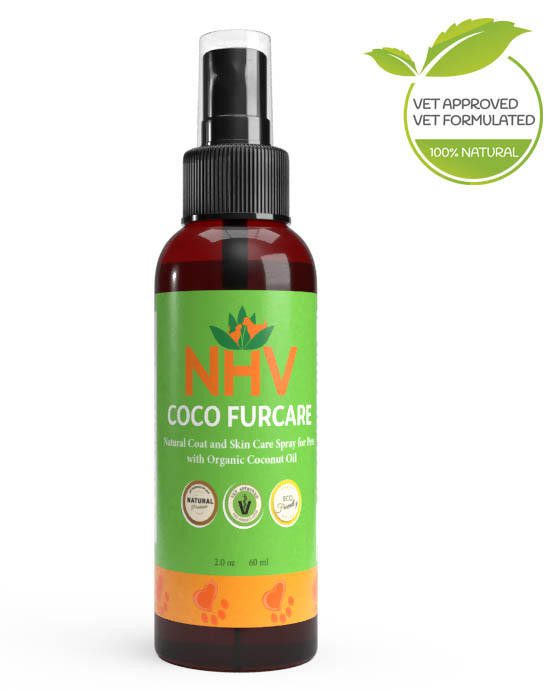
Holistic Dog Fur Care and Skin Supplement
This dog coat and skin supplement is an easy-to-apply topical spray. Coco Furcare for Dogs also helps deter external parasites, helps reduce itching and irritation from skin allergies, and keeps your dog’s coat sleek and healthy, all while keeping your pup smelling fresh and clean.


This dog coat and skin supplement is an easy-to-apply topical spray. Coco Furcare for Dogs also helps deter external parasites, helps reduce itching and irritation from skin allergies, and keeps your dog’s coat sleek and healthy, all while keeping your pup smelling fresh and clean.

Dog coat and skin supplements like Coco Furcare can help improve the shine and luster of your dog’s beautiful fur. Coco Furcare has natural ingredients that soothe the skin, deterring your pet from scratching themselves raw and leaving their skin open to infection. Protection against parasites and skin allergens also reduces itching and the possibility of future hot spots for your dog.
This spray-on supplement is formulated with powerful, all-natural ingredients like Neem leaf, sodium bicarbonate, and Eucalyptus. These ingredients have potent anti-inflammatory, antibacterial, and anti-pest properties that stop the source of any itching and soothe any irritation.
Coco Furcare is also made with ingredients like chamomile for a calming effect, moisturizers like cedarwood, and deodorizers such as lemongrass. All of these natural extracts help to provide comprehensive and effective care for your pet’s skin and coat.
Improper dog fur care and bites from pests like mites and fleas can result in a hot spot. Hot spots occur when a dog itches or obsessively grooms aggravated skin until the area is raw. The introduction of bacteria to the irritated area causes an itchy, infected sore. Hot spots can result in discomfort and induce hair loss. Left untreated, the wound can grow into a severe health concern.
NHV’s dog coat and skin supplements are formulated by veterinarians and herbalists with 20+ years of experience. Call our pet expert hotline and find solutions to your pet’s health concerns.
How to Apply
Lightly spray your pet from back of ears to tail, taking care to avoid the eye area. Brush through coat, repeat as needed.
For Best Results
Herbal dietary supplements are beneficial to the health and well-being of your pet and are safe for long-term use. Every pet responds to natural herbal supplements differently, therefore it is important to be consistent and administer the product daily.
Product Storage
All NHV Natural Pet Products are pure herbal extracts and contain no artificial additives, preservatives or coloring. Shelf life after opening is 2 years and refrigeration not required
Cautions and Contraindications
Avoid contact with eyes. In case of contact with eyes flush thoroughly with water. Keep out of reach of pets and children to avoid possible consumption. Do not use in pregnant or nursing animals. Speak to your vet before using our products. A second visit is recommended if your pet’s condition does not improve, or deteriorates after continued use of the supplements.
All information provided by NHV Natural Pet Products is for educational purposes only.
Dog coat and skin supplements like Coco Furcare can help improve the shine and luster of your dog’s beautiful fur. Coco Furcare has natural ingredients that soothe the skin, deterring your pet from scratching themselves raw and leaving their skin open to infection. Protection against parasites and skin allergens also reduces itching and the possibility of future hot spots for your dog.
This spray-on supplement is formulated with powerful, all-natural ingredients like Neem leaf, sodium bicarbonate, and Eucalyptus. These ingredients have potent anti-inflammatory, antibacterial, and anti-pest properties that stop the source of any itching and soothe any irritation.
Coco Furcare is also made with ingredients like chamomile for a calming effect, moisturizers like cedarwood, and deodorizers such as lemongrass. All of these natural extracts help to provide comprehensive and effective care for your pet’s skin and coat.
Improper dog fur care and bites from pests like mites and fleas can result in a hot spot. Hot spots occur when a dog itches or obsessively grooms aggravated skin until the area is raw. The introduction of bacteria to the irritated area causes an itchy, infected sore. Hot spots can result in discomfort and induce hair loss. Left untreated, the wound can grow into a severe health concern.
NHV’s dog coat and skin supplements are formulated by veterinarians and herbalists with 20+ years of experience. Call our pet expert hotline and find solutions to your pet’s health concerns.
How to Apply
Lightly spray your pet from back of ears to tail, taking care to avoid the eye area. Brush through coat, repeat as needed.
For Best Results
Herbal dietary supplements are beneficial to the health and well-being of your pet and are safe for long-term use. Every pet responds to natural herbal supplements differently, therefore it is important to be consistent and administer the product daily.
Product Storage
All NHV Natural Pet Products are pure herbal extracts and contain no artificial additives, preservatives or coloring. Shelf life after opening is 2 years and refrigeration not required
Cautions and Contraindications
Avoid contact with eyes. In case of contact with eyes flush thoroughly with water. Keep out of reach of pets and children to avoid possible consumption. Do not use in pregnant or nursing animals. Speak to your vet before using our products. A second visit is recommended if your pet’s condition does not improve, or deteriorates after continued use of the supplements.
All information provided by NHV Natural Pet Products is for educational purposes only.
Published: May 5, 2020